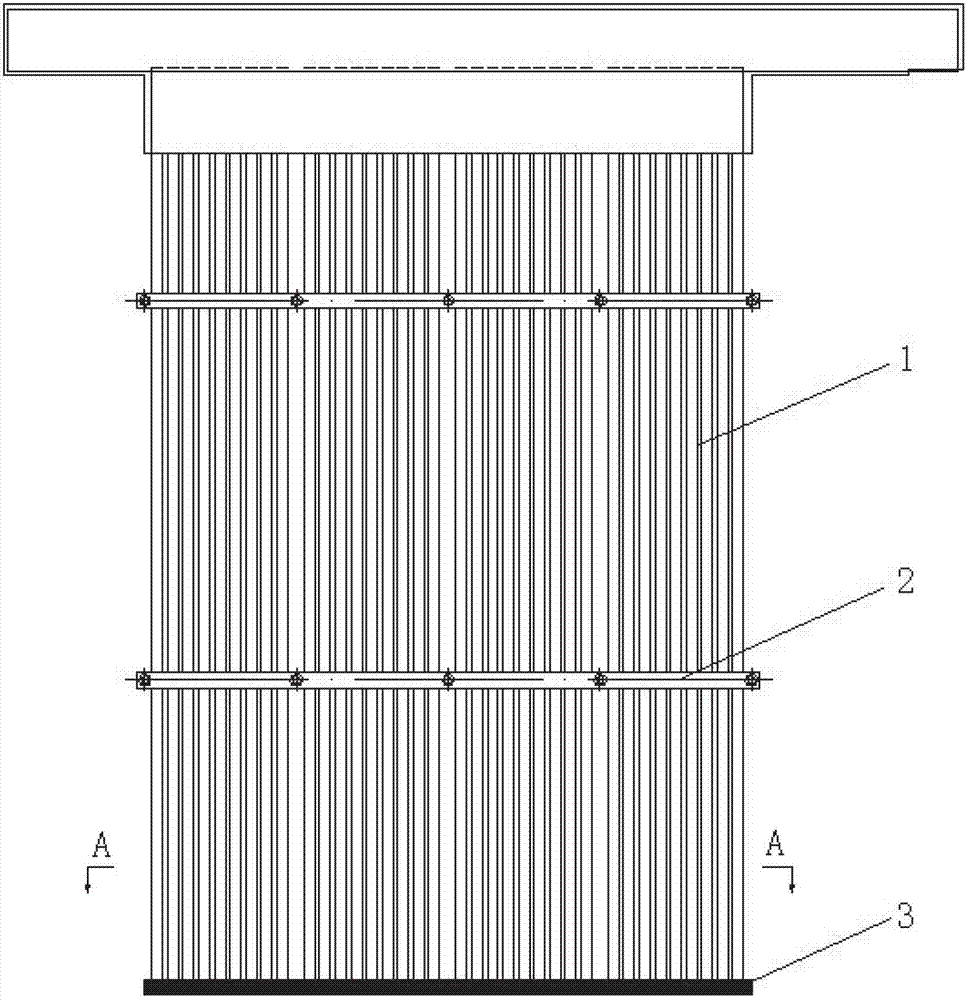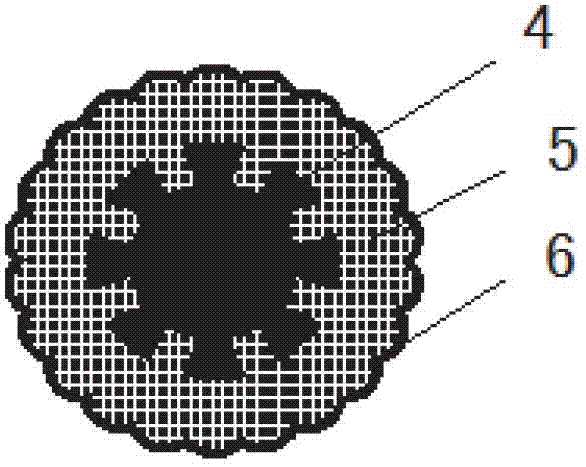Fence type anode plate for electrodeposition of nonferrous metals
A non-ferrous metal, anode plate technology, applied in the field of electrolysis, can solve the problems of high electrode cost, porous deposition layer, deterioration of anode performance, etc., to achieve the effect of improving adhesion and service life, increasing specific surface area, and improving flow performance
- Summary
- Abstract
- Description
- Claims
- Application Information
AI Technical Summary
Problems solved by technology
Method used
Image
Examples
Embodiment 1
[0025] Embodiment 1: A fence type anode plate for electrowinning of non-ferrous metals. A lead-based multi-element alloy is compounded on an aluminum rod with a base material diameter of 4 to 6 mm to obtain a composite rod, and a zigzag pattern is drawn on the surface of the composite rod. The width of the pattern is 1 ~ 1.5mm, depth 0.5 ~ 1.0mm; then prepare PbO by electrodeposition on the surface of the zigzag pattern 2 -MnO 2 - Carbon nanotube conductive ceramic coating. Then 30 composite rods are clamped and fixed with insulating edge strips, and a lead-silver-calcium alloy layer with a thickness of 20 mm is cast at the bottom of the composite rods. The lead-based multi-element alloy composite rod is obtained by conventional smelting, ingot casting and drawing processes.
Embodiment 2
[0026] Embodiment 2: Composite lead-silver alloy is made on titanium rod with base material diameter of 4-6 mm to obtain a composite rod, and the surface of the composite rod is drawn into a corrugated pattern with a width of 1-1.5 mm and a depth of 0.5-1.0 mm. Finally, PbO is coated on the outer surface of the lead-silver alloy 2 -MnO 2 - Carbon nanotube conductive ceramic composite layer. Then 42 composite rods are clamped and fixed with insulating edge strips, and a lead-silver-calcium alloy layer with a thickness of 20 mm is cast at the bottom of the composite rods.
PUM
| Property | Measurement | Unit |
|---|---|---|
| thickness | aaaaa | aaaaa |
| thickness | aaaaa | aaaaa |
| diameter | aaaaa | aaaaa |
Abstract
Description
Claims
Application Information
 Login to View More
Login to View More - R&D
- Intellectual Property
- Life Sciences
- Materials
- Tech Scout
- Unparalleled Data Quality
- Higher Quality Content
- 60% Fewer Hallucinations
Browse by: Latest US Patents, China's latest patents, Technical Efficacy Thesaurus, Application Domain, Technology Topic, Popular Technical Reports.
© 2025 PatSnap. All rights reserved.Legal|Privacy policy|Modern Slavery Act Transparency Statement|Sitemap|About US| Contact US: help@patsnap.com



